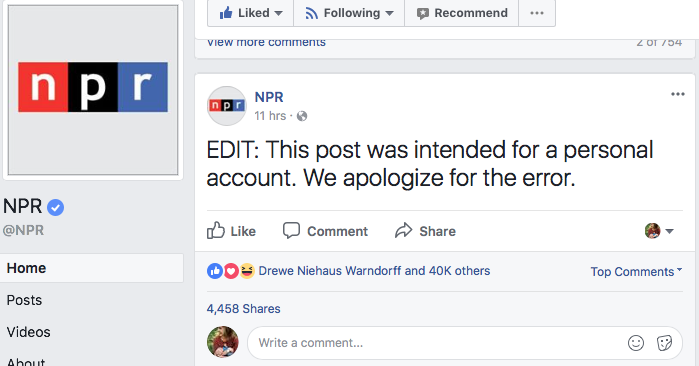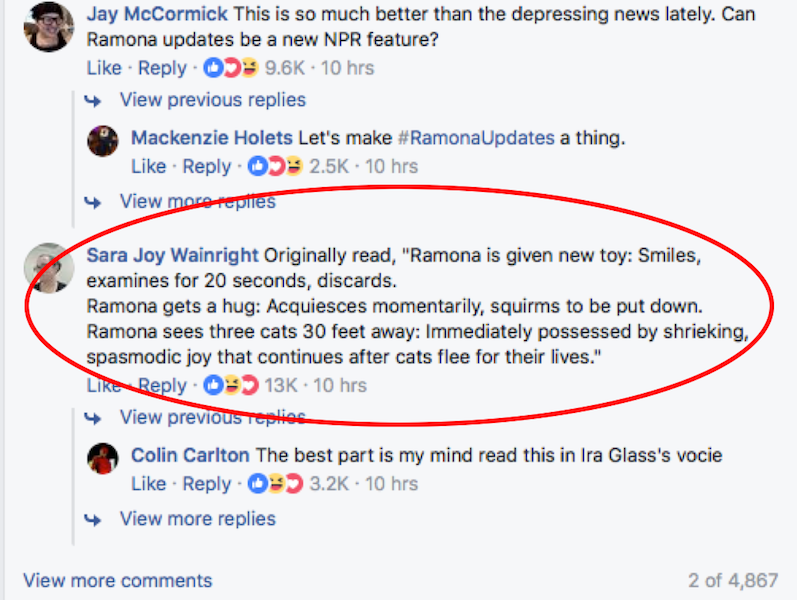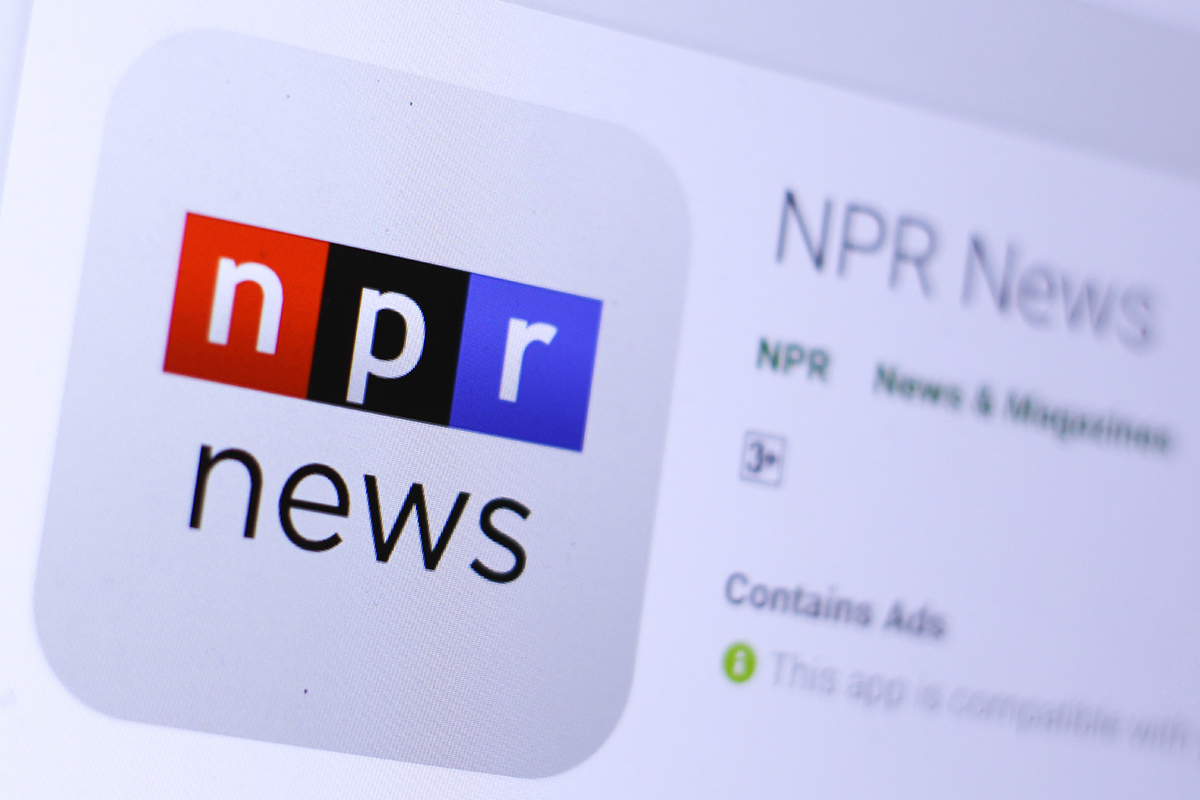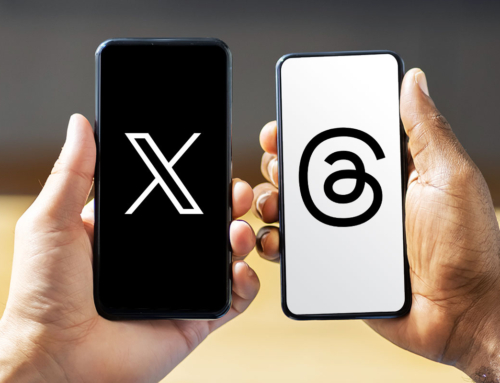Nothing sends a chill through the heart of a social media practitioner quite like seeing the following in a morning news feed:

This is the stuff of personal nightmares. Alright, alright, personal work-related nightmares, but still – it’s a cringe-worthy scenario, to say the least. And, like many (40K, to be exact, which is how many reactions this post had as of 9 a.m. this morning), I immediately had many unanswered questions (so, so, so many unanswered questions).
Presumably, the only folks with access to National Public Radio’s Facebook page (which boasts over six million likes) are social media professionals. So how on earth does someone who does this for a living accidentally post a personal message to a (very) public business page? Secondly, as this cryptic edit leaves so much to the imagination, what on earth was the content of the original personal post that made it onto NPR’s feed?
Turns out, the misappropriated post is adorably hilarious. It’s about the goings-on of a cat (or a dog … ) named Ramona, and as many commenters pointed out, an adept and detailed narrative written as only someone who works for NPR might write:
![]()
![]()

Rogue social media mistakes are not unheard of, and they are, unfortunately, the sort of crises that can happen in a split second of carelessness and can take years to recover from. Here are a few ways to prevent, or mitigate, the damage a social media incident can do to your brand’s online presence. Or, at the very least, keep you from innocuously sharing the mundane details of your cat’s day with six million followers:
Take a beat before hitting ‘post.’ Sure, the pressure to be first is real, and some might even argue that being first is tantamount to accuracy (looking at you, CBS). However, taking a beat to re-read, check that your post is coming from the appropriate account, and ensuring any hashtags used mean exactly what you think they do is a beat well spent.
Monitor, monitor, monitor. Social media doesn’t sleep; social media professionals must. Even Ramona’s owner likely needs a few hours of shuteye (but man, I’ll bet that’s hard to do with such riveting feline entertainment going on). Set up alerts and streams and stay informed about what’s being said about your brand at all hours of the day. If and when your brand is in hot water, it’s preferable your social media manger not be the last to know.
Think through potential crises. While you’re unlikely to pinpoint every exact scenario that could happen, facing your fears and thinking through those “eek!” moments will help to institute preparedness. It’s probably not necessary to have a specific social media crisis plan, but, without a doubt, social media should be a part of your company-wide crisis plan.
Prepare to prepare. Having responses prepared in advance for every and any potential crisis is not only impossible, using canned responses can come across as inauthentic. Instead, think through who will need to be involved in a crisis. It probably would have been a good move for Ramona’s owner to hand over the reins in this particular situation. Do your social media accounts have more than one manager? Likewise, who needs to approve crisis management messaging? If you don’t know the answer to that immediately, then your response is going to take too long. By the time it takes to run messaging up the chain you’ll be too late. Know whose eyes need to be on messaging so your response time doesn’t lag.
In this particular Ramona saga, the irony is not lost that a major media outlet, so often criticized for their tendency to report before confirming details, published before giving the post and its details a second glance. And, as far as social media disasters go this is certainly a cautionary what-not-to-do. But, I have to say, in a news feed full of very scary and all too real horrors, this #RamonaUpdate really made my morning.
UPDATED TO ADD: Plot twist! Ramona is a CHILD.
Like this post? Read more like it here and here.








